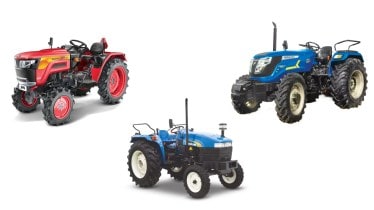Heatwaves followed by poor rainfall resulted in a disappointing start for the tractor segment in the new financial year, with retail sales falling 12% in the June quarter.
Inventory levels also rose during the three months as dispatches from manufacturers were much higher than actual registrations, data from the Federation of Automobile Dealers Association (FADA) showed.
While the high base of the last year must be taken into account, the growth in dispatches Q1FY25 was just 0.48% year-on-year. This was much below the 5% growth predicted for the year by market leader Mahindra & Mahindra.
According to the Tractor and Mechanisation Association (TMA), manufacturers dispatched 261,874 tractors domestically during Q1. Retails, meanwhile, stood at 197,719 units during the quarter, according to FADA. The gap between the two highlights the added inventory.
Uttar Pradesh, Rajasthan and Maharashtra, the three biggest states for tractor demand accounting for 40% of total retail sales, saw a drop in volumes during Q1. This could be a result of the dry weather conditions in June, which forced farmers to skip the first monsoon month for sowing.
Water availability in the 150 main reservoirs across the country dipped to just 20% of their total live storage capacity, according to a Central Water Commission bulletin at the end of June. This has improved to 26% as of July 11, but is below the 33% recorded for the corresponding period last year.
Arun Agarwal, VP and analyst – fundamental research, Kotak Securities, said, “Domestic tractor demand in June was supported by an increase in MSPs (minimum support prices) for kharif crops and inventory build-up. Rainfall in June was below the long-term average, and monsoon progression needs to be monitored.”
Tractor demand in Maharashtra hinges significantly on sugarcane and soybean production, which are heavily affected by rainfall patterns. As per a report by Centrum, demand in Maharashtra, the third largest tractor market, has fallen by around 40% over the past one year. Due to the low MSP of soybean, farmers have been holding a significant inventory for three years, resulting in lower sowing, Centrum added.
Assembly elections in the state, expected to be held around October, will also play a role, say market experts. “The elections will significantly influence tractor demand in the coming months. Yet increase in government subsidies could further boost demand,” said a Mumbai-based analyst.
The tractor industry has clocked continuous year-on-year growth since 2020, with 2023 closing with 915,258 units sold, TMA data shows. During the six months ended June, volumes have fallen 10% y-o-y.
Tractors typically have a life cycle of six-eight years and replacement demand accounts for 60-65% of volume. Tractor volumes saw healthy growth between FY16 and FY18, which can translate into replacement volume in this fiscal.
